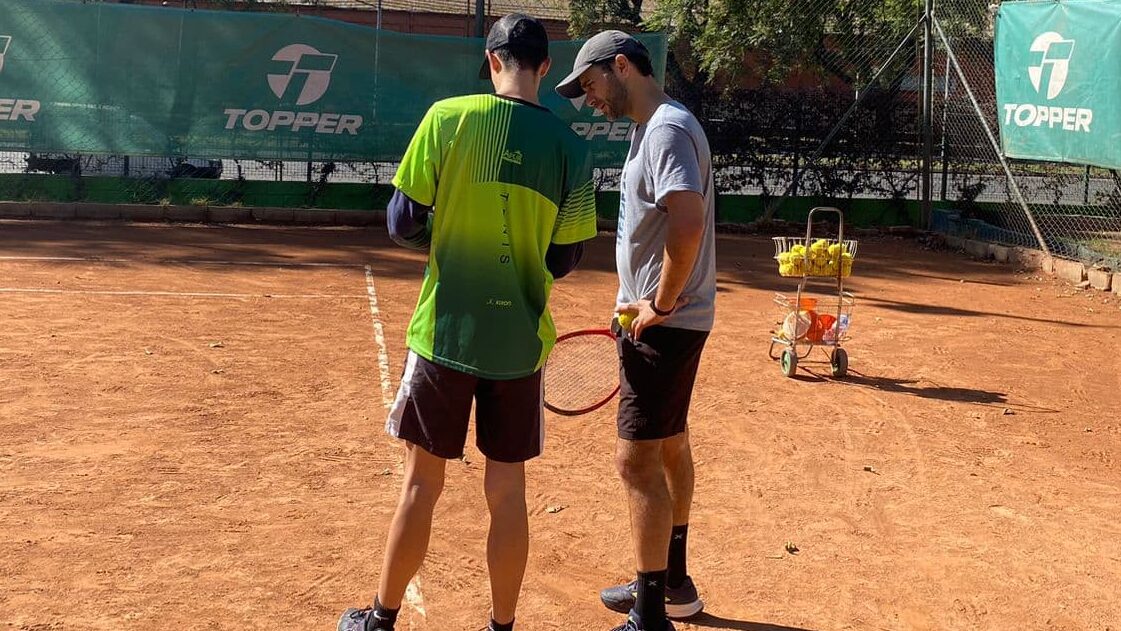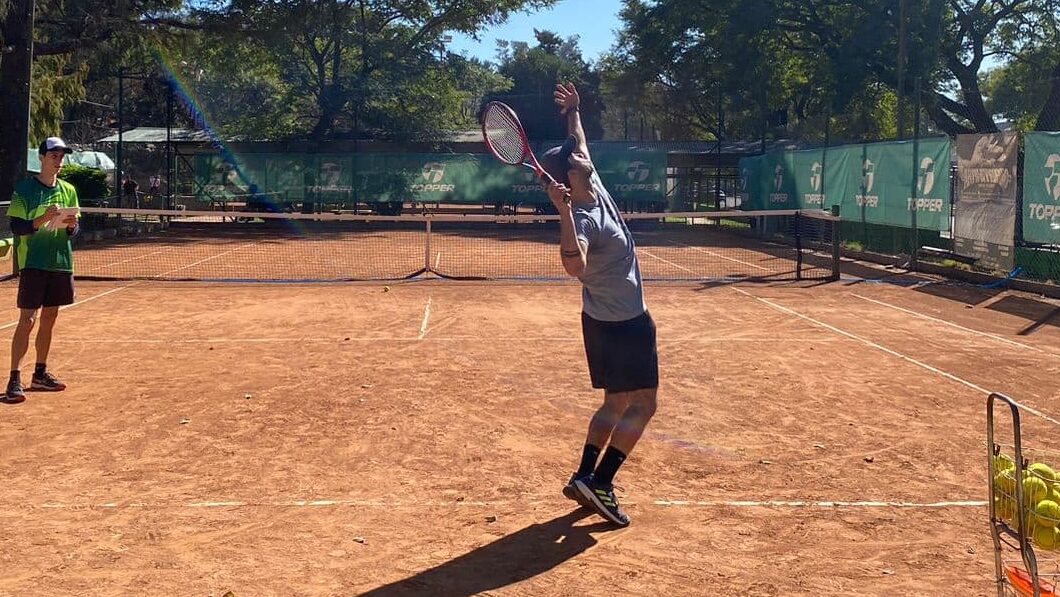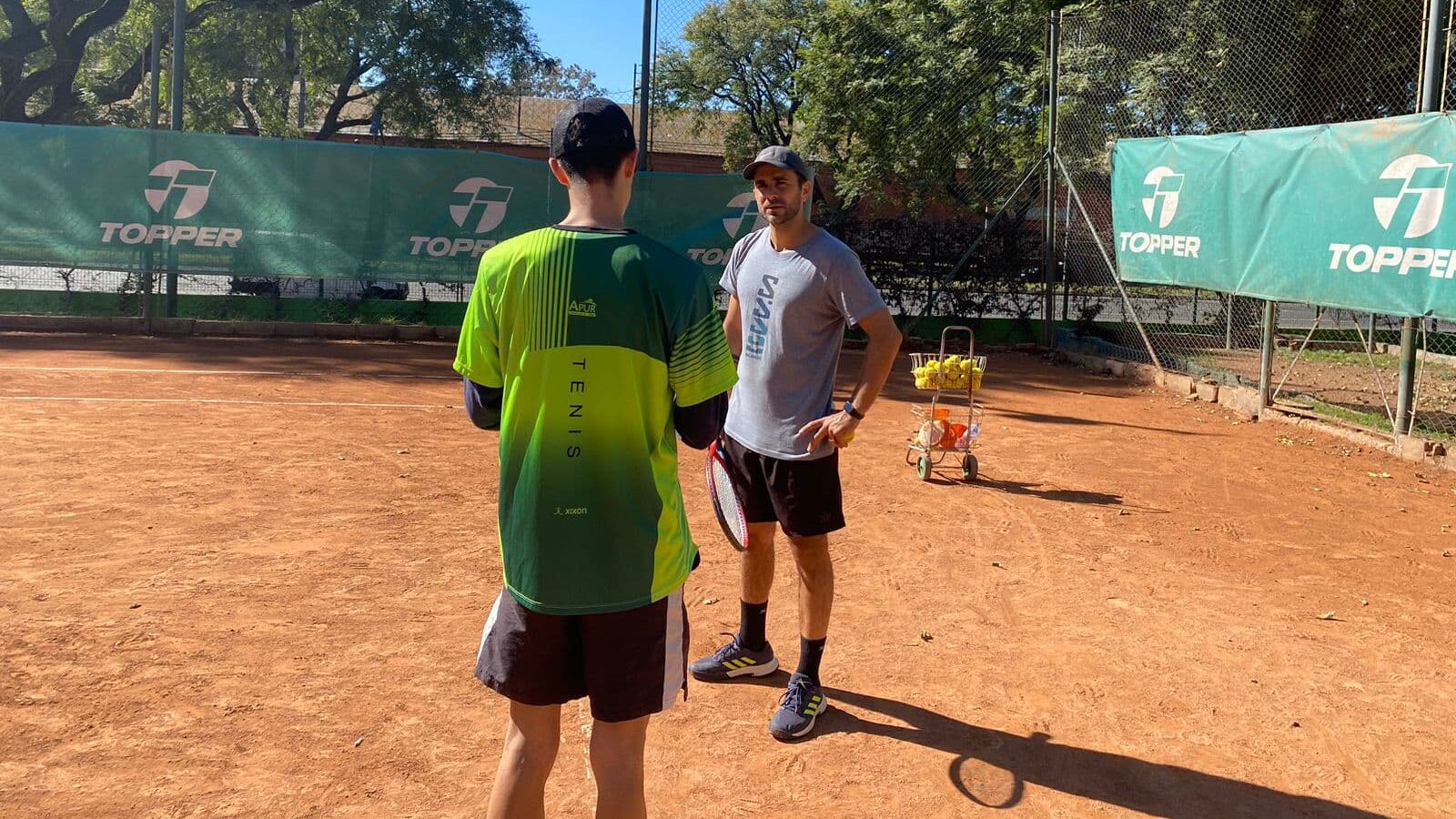Every tennis player, regardless of their level, always looks to improve and understand their performance on the court. That’s why I want to talk about an innovative tool revolutionizing the world of tennis: statistical video analysis.

Have you ever wondered how many serves you land in a match or how many successful forehand strokes you make? This analysis system lets you get detailed and personalized information about your performance in each match. Imagine having precise statistics that allow you to identify your strengths and areas for improvement more specifically. My name is Santiago Galla, and I specialize in tennis training for adults of all levels. It is never too late to keep competing and improving yourself. That’s why I dedicate myself to working individually with my students, using tools like statistical video analysis to boost their development on the court. No matter your tennis age, level, or goals, there is always room for improvement.
It all started when I watched my students play and felt the need to analyze them more deeply. Last summer, I took a pencil and paper and began manually noting all the statistics they generated during matches. Then, I transferred this information to a PowerPoint with pre-made charts that helped me visualize the obtained data. Thanks to a recent investment, I started using an app to record match statistics live. With the help of artificial intelligence, I can analyze the data more efficiently. Despite this, I still meticulously review each video, looking for possible errors and data the app might not capture. I currently work individually or with double pairs. My students can send me their recordings, or I can record them myself and then perform the statistical analysis to show them their strengths and weaknesses.

You might wonder what kind of data I can analyze beyond what is seen at the end of a match. Here are some of the data points I measured from the recordings:
- Percentage of strokes (forehand, backhand, topspin, flat, or slice)
- Percentage of strokes that landed in and out of the court
- A map showing the areas of the court where the ball was hit and directed
- The average and highest speed of my strokes
- And many more statistics…
It’s a job that takes time and skill, requiring attentiveness to measure all the possible statistics one can obtain in a tennis match. Moreover, my motivation is seeing an adult player fully focused on continuing to progress despite their level or age, which I highly value in the people I work with.

Of course, there are downsides, such as the time it takes. I am on the court for the duration of the match and then off the court, where I have to analyze and create charts to pass on the report to the player. The cost of materials, like tripods, cell phones, cameras, apps, memory cards, etc., is another factor.
In this project, I focus on offering a new and innovative perspective that is increasingly making its way into sports. My goal is to help many players feel the way they once dreamed of feeling. It’s a job that requires time, experience, and total dedication. It’s crucial to be alert and able to analyze all possible statistics during a tennis match. What motivates me most is seeing an adult player focused on improving, regardless of their level or age. That is what I truly value in the people I work with. Despite the challenges, I focus on the opportunity to offer a new and innovative perspective that is gaining ground in the sports world. I aim to help players reach their maximum potential and feel fulfilled in the sport they love.
Let me explain in detail the method I use to conduct statistical analysis through videos:
- I record the player’s training session and then upload it to the app to get the necessary data.
- I start working on my report once the app provides all the data.
- I use a tool to create simple charts to visualize the player’s performance.
- After analyzing the charts, I identify their strengths and weaknesses and work on personalized improvements.
- Finally, I prepared a PDF report and an explanatory video for the player.
- Together, we review and discuss the results to improve their performance on the court.
One student wanted to know the speed of his tennis serve and the areas of the service box where he generated the most impact. To answer these questions, we analyzed the video and charts in detail to see his performance on the court. Here are the specific steps we took to break down his serve:
- The first step was to analyze the video without considering the data shown by the app. This allowed us to observe the location of the services at a glance.
- Then, we reviewed the chart that indicated where the ball impacted, at what speed, what type of serve he executed, and in which areas of the service box he generated the most bounces.
- Once this was done, the student shared his goal with me: whether to serve more flat, open, or with more power. I could then compare these desired objectives with the serves he had executed.
- After analyzing and discussing these comparisons, I reviewed the player’s technique and body biomechanics.
- With this information, I could help him correct his posture, impact technique, and other key elements to achieve the desired serve.
- Finally, the most intense work began: improving the serve to achieve the set goals.
- Today, we continue working on the service. I am recording gameplay where the player tries to apply the corrections we have been making. We are in the most challenging stage of the correction process, where fears, frustrations, and negative actions may arise, potentially affecting the student’s progress. This is a delicate but essential phase for significant improvement. Although it may generate temporary difficulties, it is necessary to go through it with patience and perseverance. The student will learn to overcome these obstacles and develop greater confidence and skill in the service. We can guide him towards sustained progress with a positive approach and constant support.
The analysis revealed invaluable data that allowed us to better understand the student’s game. We could precisely determine the average speed of his serves and the areas of the service box he frequently impacted. This information gave him a clear view of his strengths and areas for improvement, which will undoubtedly help me refine his technique and have a more effective game as a coach. Thanks to this teamwork, the student could satisfy his curiosity and obtain concrete data that would help him optimize his performance on the court. He now has valuable information that will enable him to focus his training efforts strategically and reach new levels of excellence. The collaboration between the student and the analysis team was crucial to identifying improvement opportunities and outlining an effective action plan. This synergy brings us closer to our goal of taking the player’s performance to new heights.

As you can see, this is a very specific and personalized job where I strive to resolve all possible doubts. Sometimes, players are surprised by the data I provide, but in most cases, it helps them see things they never considered before. As I mentioned earlier, this project is constantly growing for me. I aim to keep improving and adding more tools, such as biomechanical analysis and body measurements, which can make a big difference in on-court performance.
With this tool, you don’t need to be a professional or an adult. It can be applied at any stage of a player’s career, whether at a competitive level. While I mainly work with adults, I can also work with young players, professionals, and even veterans who wish to keep competing. Nowadays, this is an innovative and evolving field within tennis learning. Thanks to technological advances, which are increasingly complex and comprehensive, this discipline integrates perfectly with a strategic sport like tennis, where every error and success can define the outcome of a match.
This method of work fascinates me and sparks my curiosity. It makes me feel completely immersed in the player’s experience as if I were part of their team. I hope to analyze professional players in the future, delve deeper into their tennis, and help them in their on-court work. It would be fantastic to contribute crucially to these athletes’ tennis success. I hope that day comes soon, as I am excited about the prospect of being a significant part of the development and growth of elite players.